
Do you have a question about the Midea SEL-KF53GW/Y-A(B) and is the answer not in the manual?
| Brand | Midea |
|---|---|
| Model | SEL-KF53GW/Y-A(B) |
| Category | Air Conditioner |
| Language | English |
Key safety instructions for servicing, emphasizing manual review and authorized personnel.
Essential safety measures to be followed before and after servicing the unit.
Procedure for testing insulation resistance to prevent electric shock hazards.
Lists key functions and protective features of the air conditioner.
Details the location and function of controls on the remote and indoor unit.
Provides physical dimensions for various indoor unit sizes.
Shows installation plate dimensions and mounting guidelines for indoor units.
Details the dimensions for various outdoor unit sizes.
Lists essential tools required for the installation process.
Specifies accessories and parts needed for unit installation.
Instructions for proper placement and mounting of the indoor unit.
Guidelines for selecting an appropriate location and installing the outdoor unit.
Specifies maximum allowable piping length and elevation differences.
Details how to install the mounting plate for the indoor unit.
Instructions for drilling the wall hole for piping and cable passage.
Step-by-step guide on performing correct pipe flaring for refrigerant connections.
Steps for connecting the pipes and drain hose to the indoor unit.
Detailed steps for routing and connecting pipes/cables for rear right installation.
Instructions for hanging and securing the indoor unit onto the installation plate.
Final connection of refrigerant pipes and drain hose to the indoor unit.
Steps for routing and connecting pipes/cables for rear left installation.
Instructions for hanging and securing the indoor unit onto the installation plate.
Final connection of refrigerant pipes and drain hose to the indoor unit.
Applying insulation and tape to the connected piping for protection.
Final routing of pipes and drain hose for external passage.
Steps for connecting the refrigerant pipes to the outdoor unit.
Final tightening of outdoor pipe flare nuts using a torque wrench.
Guidance for connecting the electrical power and communication cables.
Steps to connect the wiring to the indoor unit's control box.
Procedures for connecting electrical cables to the outdoor unit.
Warnings and preparation steps before wiring the outdoor unit.
Requirement for circuit breakers and isolation devices for safe power supply.
Procedures to ensure proper water drainage from the indoor unit.
How to shape and insulate the refrigerant pipes.
Explanation of why air and moisture removal is critical for system performance.
Detailed procedure for evacuating the system using a vacuum pump.
Method for testing the system for refrigerant leaks using nitrogen gas and soap.
The process of using a vacuum pump to remove air and moisture.
Final steps to complete the air purging process and prepare for operation.
Instructions for securely anchoring the outdoor unit.
Steps for preparing and using the remote control for testing.
How to operate the unit for testing using the indoor unit's controls.
Checks to perform after test running to confirm system performance.
Procedure for collecting refrigerant in the outdoor unit for servicing or relocation.
Step-by-step instructions for performing the pump down operation.
Critical warnings to follow during the pump down process.
Diagrams illustrating the refrigerant flow for different unit types.
General classification and causes of common air conditioner faults.
Specifies acceptable operating voltage and temperature ranges for the unit.
LED error codes for cooling-only air conditioner models.
LED error codes for reverse cycle models (Part I).
LED error codes for models with advanced electrical functions (Part II).
Troubleshooting steps for issues related to current protection.
Diagnostic steps for when the air conditioner fails to start or operate.
Identifying causes and remedies for abnormal sounds from the indoor unit.
Identifying causes and remedies for abnormal sounds from the outdoor unit.
Troubleshooting steps for issues with the remote control.
Common causes and solutions for reduced cooling or heating performance.
Troubleshooting issues related to compressor protection and overload conditions.
Diagnosing problems caused by sensor failures, voltage, or fan speed controls.
Resolving issues with indoor unit display and lack of cooling or heating.
Solutions for water leakage from the indoor unit and high room humidity.
Troubleshooting steps for zero-crossing error occurrences.
Wiring schematics for specific indoor unit models.
Wiring diagrams for indoor units identified in sections 4.1.3 and 4.1.4.
Wiring diagrams for indoor units identified in sections 4.1.5 and 4.1.6.
Wiring diagrams for indoor units identified in sections 4.1.7 and 4.1.8.
Wiring diagrams for indoor units identified in sections 4.1.9 and 4.1.10.
Wiring diagrams for indoor units identified in sections 4.1.11 and 4.1.12.
Wiring diagrams for outdoor units listed in sections 4.2.1 and 4.2.2.
Wiring diagrams for outdoor units identified in sections 4.2.3 and 4.2.4.
Wiring diagrams for outdoor units identified in sections 4.2.5 and 4.2.6.
Wiring diagrams for outdoor units identified in sections 4.2.7 and 4.2.8.
Wiring diagrams for outdoor units identified in sections 4.2.9 and 4.2.10.
Wiring diagrams for outdoor units identified in sections 4.2.11 and 4.1.12.
Wiring diagrams for outdoor units identified in sections 4.2.13 and 4.2.14.
Wiring diagrams for outdoor units identified in section 4.2.15.
Visual breakdowns of the unit's components for identification.
A catalog of part numbers for ordering replacements.
Technical data and performance characteristics of the air conditioner.
A cross-reference between Midea and Elux model numbers.




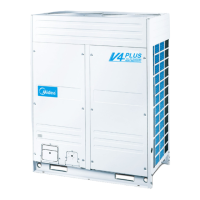
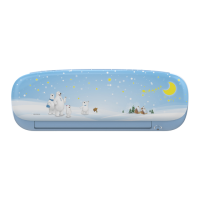
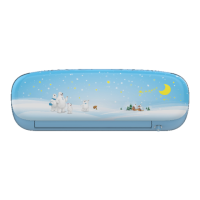
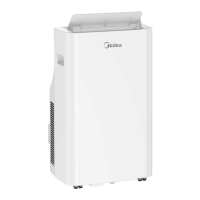

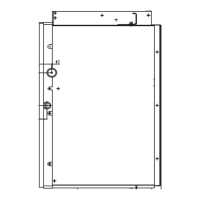


